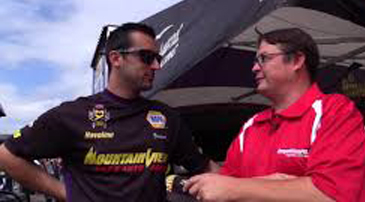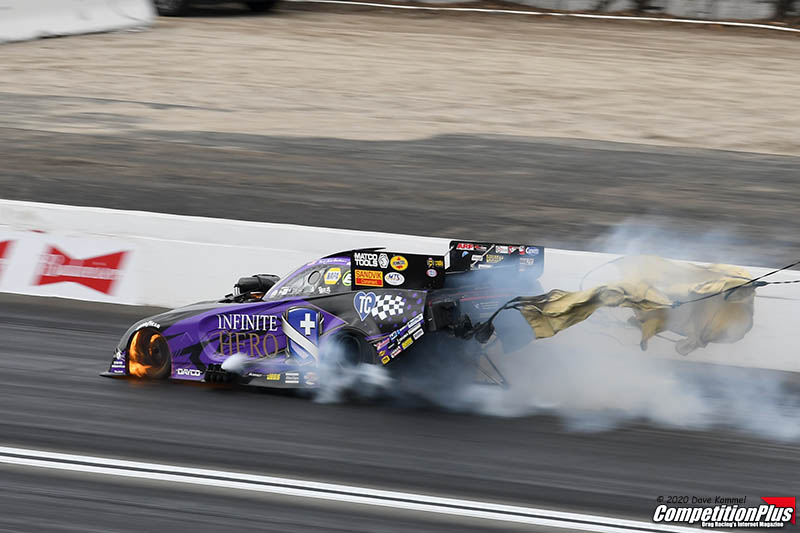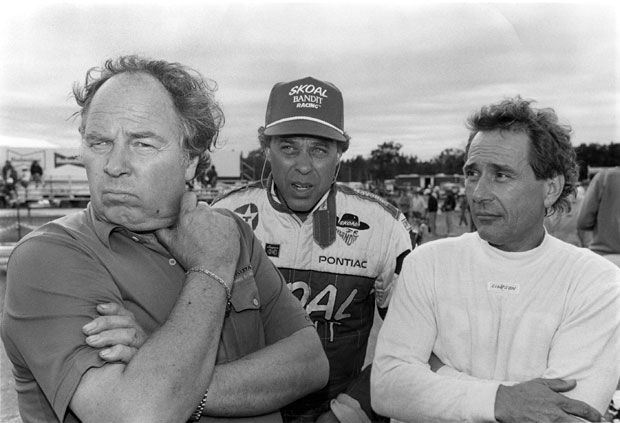TRACY RENCK: TIME FOR RACE TEAMS, NHRA TO PUT THEIR HEADS TOGETHER FOR A MORE ECONOMICAL SERIES
 With NHRA races on hold due to the COVID-19 (coronavirus) pandemic, there’s no better time than now to discuss a plan for NHRA moving forward.
With NHRA races on hold due to the COVID-19 (coronavirus) pandemic, there’s no better time than now to discuss a plan for NHRA moving forward.
Because of the pandemic, a lot of NHRA’s top teams have let people go. Others who have stayed with their teams have had their salaries cut from 30 to 50 percent. Teams are trying to do what they can to survive.
Sponsors are renegotiating their contracts because their contracts were for 24 races. If the NHRA Mello Yello Series resumes June 5-7 for the Gatornationals in Gainesville, Fla., it will be a 19-race schedule. The season is scheduled to end Nov. 13-15 at the Auto Club Finals in Pomona, Calif.
There’s a lot of uncertainty right now. If racing does resume in June, it doesn’t mean thousands and thousands of spectators will be allowed to attend the events.
The light switch being turned on back to normalcy immediately isn’t going to happen – and that will have a big impact on NHRA.
The biggest difference between NHRA drag racing and pretty much every major sport is most other sports generate money from TV.
NASCAR generates a tremendous amount of money from TV so it can have races with no spectators and so can IndyCar, for that matter.
NHRA pays to produce its show. It owns the production team and equipment, but it still cost NHRA money to produce the show and then the sanctioning body pays to have it aired on either FS1 or FOX. It is a time buy.
So, NHRA having a non-spectator event doesn’t make sense. NHRA is dependent upon the revenue from the spectators.
That’s what makes this a dire time for the sport.
Now is the time for the race teams and NHRA to get to together and try and figure out how to make it to where it doesn’t cost so much money to compete in the sport, especially in the Top Fuel and nitro Funny Car classes.
Right now, to field a championship-caliber team in Top Fuel and Funny Car, realistically a $3 million budget is needed.
That’s not even operating at the top of the line, but that would put a team in the top 10.
Race teams and NHRA need to put their heads together and figure out how to make it a successful $2 million-budget NHRA Mello Yello Series rather than a $3 million series. The series needs to cost less money to run.
The reason for this is the corona virus pandemic.
When the country reopens, it would seem to make logical sense that corporate America’s purse strings will get tighter than ever.
This is the first time in the history of NHRA that America has been shut down with no revenue. Even during the 2007-2009 recession, companies still had revenue and they were still open for business.

With the massive hit America’s economy is taking, it is likely to result in the worst amount of corporate involvement in motorsports over the next three years than the sport has ever seen.
Corporations are just looking for excuses to get out of their contracts. There are going to be some challenging times moving forward. Several teams will likely lose their sponsors at the end of the season.
Not because these aren’t great teams, but why would companies be spending advertising money when they have no revenue?
The chances of teams going out and finding a $2.5-million-dollar primary sponsor and $500,000 in associate sponsors are pretty slim.
The chance of somebody finding a $1.5-million primary sponsor and a $500,000 in associates is going to be tough.
However, walking into a boardroom a team would feel a lot more comfortable asking for $1.5 million than $2.5 million. Most teams operate on three-year programs with sponsors, so they are looking for $3 million a year.
That calculates to $9 million over three years. When asking for $2 million, that’s $6 million for three years. The latter is a big difference.
NHRA didn’t run the operation costs of the race teams up. The race team owners did that themselves.
John Force Racing, when money was pouring in from Ford and Castrol, JFR started the CNC Machines and started building its own blocks and blowers. John Force won 16 world championships in nitro Funny Car because he was on the cutting edge of all of that.
Then, a couple of other teams – Don Schumacher Racing and Kalitta Motorsports caught up, manufacturing and technology-wise. But what the end effect was this high overhead operating expense for teams.
 Back when legends Don Prudhomme and Kenny Bernstein were racing, they had nice shops, but they weren’t manufacturing facilities and they didn’t employ 100 people.
Back when legends Don Prudhomme and Kenny Bernstein were racing, they had nice shops, but they weren’t manufacturing facilities and they didn’t employ 100 people.
They had a nice roof over the race teams head, but it wasn’t this outrageous high overhead racing business.
In these unprecedented economic times, it seems unrealistic teams will be able to generate the money they need to support the overhead of their racing business for the next three years.
Kalitta Motorsports probably can because this team has a unique business with air freight and specialty air cargo.
Not many other teams fall into the “unique” business category.
Thus, it’s time to look at 2021 and that needs to be the start of a new era that requires less operating budget.
Some changes that could be made could include reducing the amount of crew members for Top Fuel and Funny Car teams. For the 2020 season NASCAR did that.
If teams need extra crew members because of the quick, short turnaround time for TV then NHRA needs to extend the turnaround time 10 to 15 minutes. Live final-round racing can still happen.
Also, does every NHRA event need to be three days long?
Some of the bigger events could be three days – but others could be reduced to two days – Saturday and Sunday.
Everybody who has skin in the game is going to have to give a little bit to create a NHRA Mello Series that cost less money. The track owners are going to have to give up a little bit, NHRA is going to have to give up a little bit and the race teams are going to have to trim some fat and figure out how to get more mileage out of their equipment.
All other major motorsports sanctioning bodies – Formula 1, NASCAR and the IndyCar Series - have made monumental changes to reduce the operating costs of the race teams.
It is time that NHRA follows suit.
The future of drag racing depends on it.








































